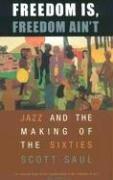| Listing 1 - 4 of 4 |
Sort by
|
Book
ISBN: 1527569934 Year: 2021 Publisher: Cambridge Scholars Publishing
Abstract | Keywords | Export | Availability | Bookmark
 Loading...
Loading...Choose an application
- Reference Manager
- EndNote
- RefWorks (Direct export to RefWorks)
This collection addresses different issues involving performance and musical creation in contemporary piano music. Organised into three sections, it examines the aesthetic and technical aspects of musical creation in the 20th century, and evaluates the questions that these aspects pose regarding the interpretative and performative process. It also offers a reflection on artistic practices in the 21st century, and explores their contribution to redefining the contemporary performative field.
Music --- Piano music
Book
ISBN: 8322640196 8322640188 Year: 2021 Publisher: Katowice [Poland] : Wydawnictwo Uniwersytetu Śląskiego,
Abstract | Keywords | Export | Availability | Bookmark
 Loading...
Loading...Choose an application
- Reference Manager
- EndNote
- RefWorks (Direct export to RefWorks)
The subject of this monograph is the issue of creative development of a pianist interpretation in chamber music, with the consideration of various transcriptions. In order to fully cover the subject, the author of the paper has tried to systematize the term transcription, as well as presented the pedigree of the selected musical pieces, which are parts of works of art, in the background of chamber musical pieces of their composers: J. Brahms and D. Shostakovich. This monograph also covered the area of knowledge about the relationship between the evolution of chamber music with the accompaniment of piano and the development of the piano sound at the turn of the 18th and 19th centuries.The aspect, which was undertaken in this study - the pianist interpretation in regard to the changing performance medium in the musical piece - was presented on the sample of substantial transcription, using selected elements of the musical work: dynamics, articulation, agogic and some elements of musical expressions.The analysis of the discussed issue was presented on the basis of stylistically diverse musical pieces: Sonata in E-flat major, op. 120 No. 2 for clarinet and piano and its transcription for viola and piano, as well as the transcription for violin and historical piano, and Sonata in D minor op. 40 by D. Shostakovich for cello and piano and its transcription for double bass and piano by James Rapport. Due to the need to show the creative role of the pianist in regard to the performance and sound opportunities of the instruments, which co-interpret the chamber musical piece, selections were made within instrumental duets with the participation of both string and wind instruments. The type of the substantial transcription was used in this work as a means to show the factors contributing to the individualization of the piano playing in chamber music and to present its different face depending on the characteristics of the chosen instrument of the co-interpreter.
Year: 2021 Publisher: New York, NY Music Sales Corporation
Abstract | Keywords | Export | Availability | Bookmark
 Loading...
Loading...Choose an application
- Reference Manager
- EndNote
- RefWorks (Direct export to RefWorks)
Piano music --- Music --- Manuscripts --- Eastman, Julius

ISBN: 0674043103 9780674043107 0674018532 9780674018532 9780674011489 0674011481 9780674018532 0674011481 Year: 2021 Publisher: Cambridge, MA
Abstract | Keywords | Export | Availability | Bookmark
 Loading...
Loading...Choose an application
- Reference Manager
- EndNote
- RefWorks (Direct export to RefWorks)
This text tells the story of the long decade between the mid-fifties and the late sixties - a time when jazz became both newly militant and newly seductive, its example powerfully shaping the social dramas of the Civil Rights movement, the Black Power movement and the counterculture.
Jazz --- Music. --- Music --- Music, Dance, Drama & Film --- Music History & Criticism, Popular - Jazz, Rock, etc. --- Accordion and piano music (Jazz) --- Clarinet and piano music (Jazz) --- Cornet and piano music (Jazz) --- Double bass and piano music (Jazz) --- Jazz duets --- Jazz ensembles --- Jazz music --- Jazz nonets --- Jazz octets --- Jazz quartets --- Jazz quintets --- Jazz septets --- Jazz sextets --- Jazz trios --- Jive (Music) --- Saxophone and piano music (Jazz) --- Vibraphone and piano music (Jazz) --- Wind instrument and piano music (Jazz) --- Xylophone and piano music (Jazz) --- African Americans --- Third stream (Music) --- Washboard band music --- History and criticism. --- Social aspects --- Bop (Music) --- Arts, American --- Influence.
| Listing 1 - 4 of 4 |
Sort by
|

 Search
Search Feedback
Feedback About UniCat
About UniCat  Help
Help News
News